In the sweltering Japanese summer, there’s a special dining experience that offers a delightful escape from the heat: enjoying a meal on a “kawadoko” (or “kawayuka”). Dining with the murmuring river as your soundtrack, caressed by cool breezes, is pure bliss.
This guide will introduce you to what kawadoko is, when you can enjoy it, and most importantly, the delicious array of foods you can savor there, with a special focus on culinary delights. We’ll also highlight some recommended restaurants for different types of cuisine. By the end, you’ll undoubtedly be eager to experience these unique summer tastes for yourself!
First Things First: What is “Kawadoko” & When Can You Enjoy It?
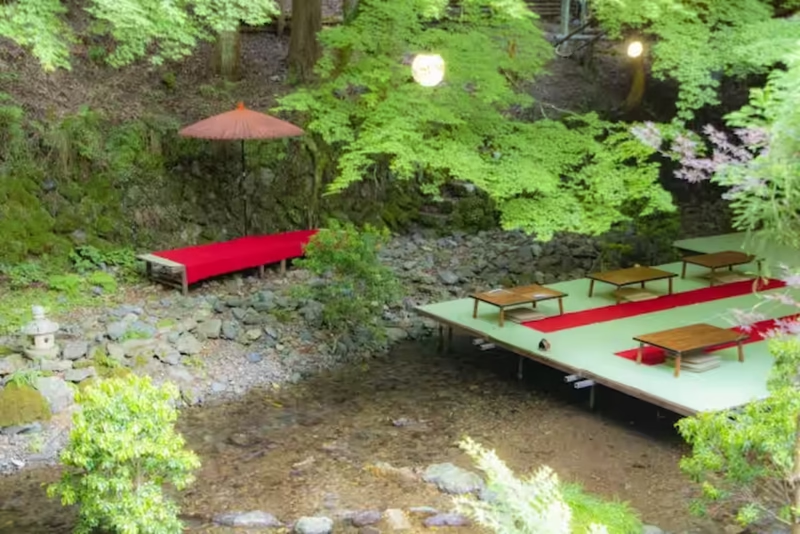
Kawadoko are specially constructed outdoor dining platforms set up primarily during the summer, either over a river or in a spot with a clear view of the flowing water. They are affectionately known as “kawayuka” in Kyoto and “kawadoko” in areas like Kibune and Osaka.
Their greatest appeal is undoubtedly the exceptional location. The cool breeze drifting over the water acts as a natural air conditioner, creating a refreshing oasis far from the city’s heat. The beautiful natural scenery, enhanced by the enchanting glow of lanterns at night, elevates the dining experience.
Kawadoko is a culinary culture born from ancient Japanese wisdom and aesthetics, a way to escape the harsh summer heat and enjoy delicious food.
The “Kawadoko” Season
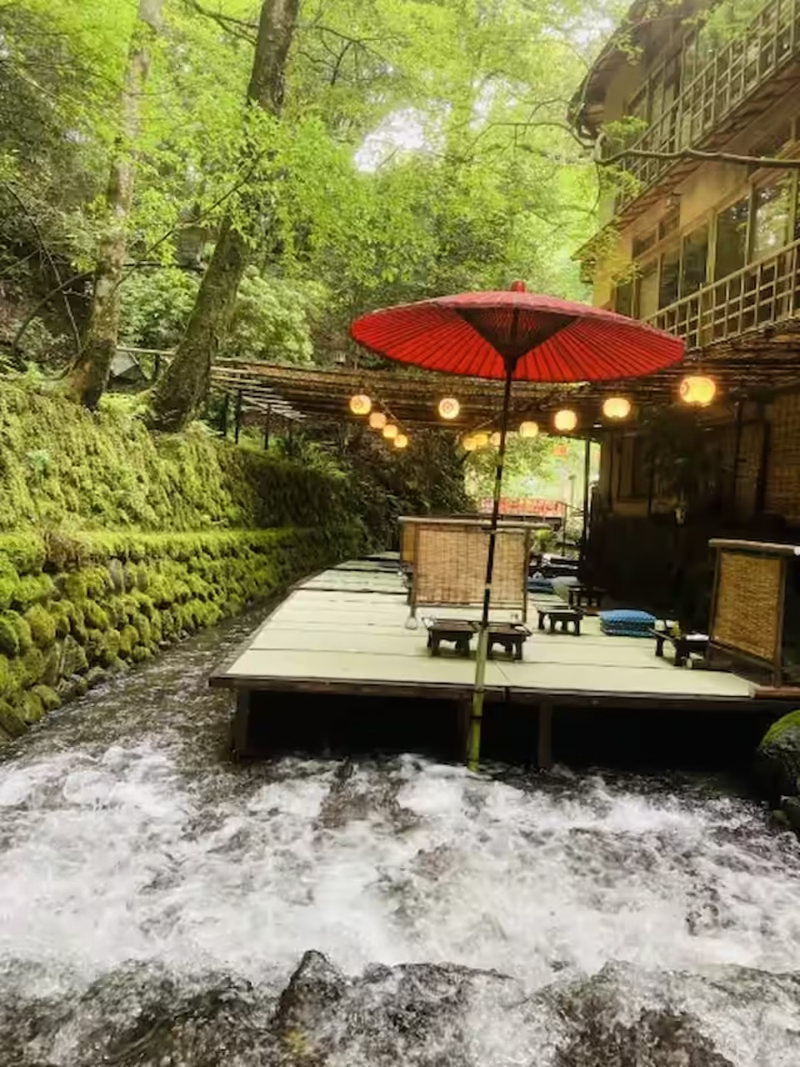
The period when kawadoko are set up varies by region and establishment, but it generally spans from early summer to early autumn.
- Kyoto’s Kamo River Noryo-yuka:
- Typically operates from May 1st to around September 30th each year.
- In May and September, many establishments offer “hiru-yuka” (daytime platforms), allowing for relatively affordable lunches. From June to August, they are generally open only in the evening (though some may offer daytime service). Comfort levels can vary depending on the weather, such as during the rainy season or intense late summer heat.
- Kyoto’s Kibune Kawadoko:
- These can also be enjoyed from around May 1st to late September.
- Kibune is noticeably cooler than central Kyoto, offering a refreshing, cool atmosphere even in midsummer, making it a popular retreat. The peak season is from the end of the rainy season through August.
- Other Regions:
- Places like Osaka’s Kitahama Terrace or Minoh’s kawadoko generally operate during the summer months (around June to September), but it’s best to check with individual establishments for specific dates.
Key Points for Timing:
- Best Time to Book: For popular periods (especially weekends in July and August), early booking is essential. Some restaurants start taking reservations months in advance.
- Weather Watch: During the rainy season (late June to mid-July) or typhoon season, kawadoko may be unavailable due to weather. Always check the restaurant’s website for updates.
Savoring Summer’s Bounty: Foods to Enjoy on a Kawadoko (with Restaurant info)
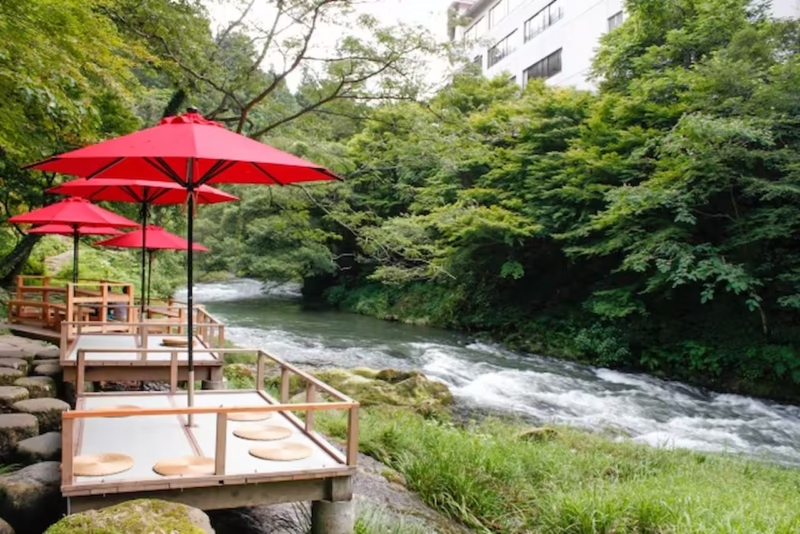
So, what kinds of delicious dishes can you expect on a kawadoko? While offerings vary, here are some representative culinary experiences:
1. Kyoto Cuisine (Kyo-ryori) & Kaiseki: Traditional Flavors in a Special Setting
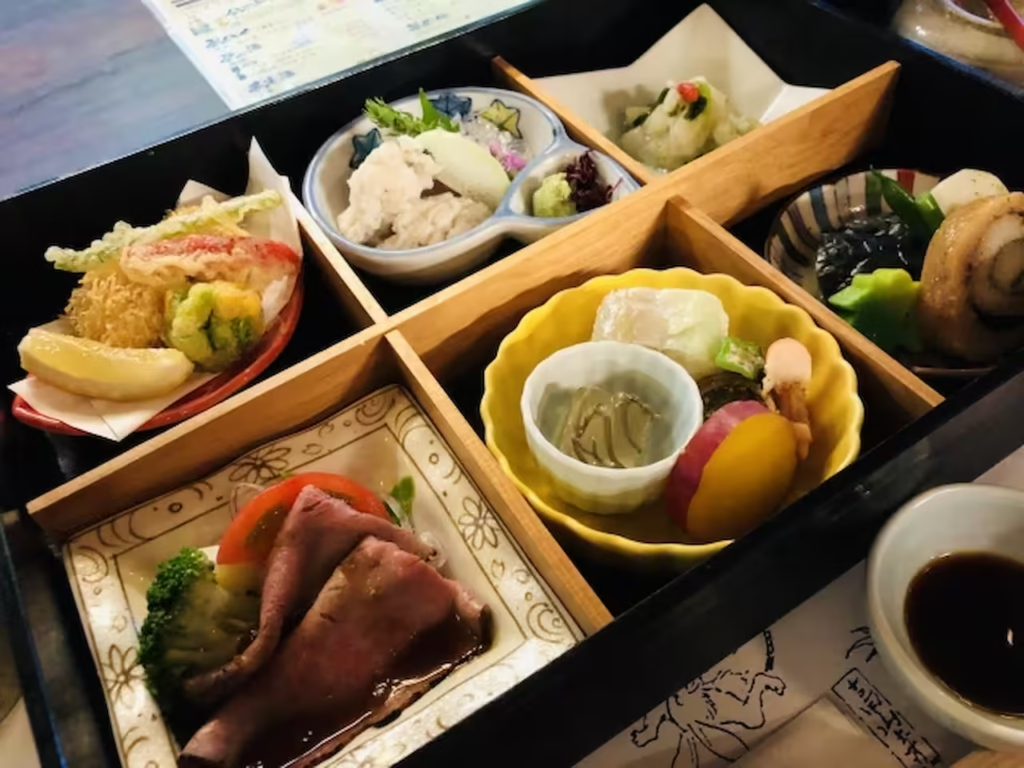
- Characteristics: Many establishments along Kyoto’s Kamo River and in Kibune offer authentic Kyo-ryori (Kyoto cuisine) or multi-course Kaiseki meals. These dishes, featuring an abundance of seasonal ingredients and beautiful presentation, are a true epitome of Japanese culinary art.
- Example Dishes: Hassun (an assortment of seasonal mountain and sea delicacies), otsukuri (fresh sashimi), grilled ayu (sweetfish), hamo (conger eel) dishes, simmered summer vegetables.
- Best For: Special occasions or when you want to leisurely savor traditional Japanese flavors. These are often full-course meals.
Recommended Restaurants
Restaurant Name: Tsuruse
A three-story wooden building built in 1927, registered as a National Tangible Cultural Property. The ¥10,800 “Kyoto Kaiseki Course” includes a nine-item seasonal sashimi platter for the hassun (appetizer), and on the veranda seats overlooking the Kamo River, you can enjoy Kyoto Kujo green onion dobinmushi (earthen teapot soup) with the river breeze.
Address: Higashihashizumecho, Gojo Agaru, Kiyamachi, Shimogyo Ward, Kyoto City
Website: http://www.tsuruse.co.jp
Restaurant Name: Tankuma Kitamise Main Branch
A traditional Japanese restaurant that was the setting for Junichiro Tanizaki’s “The Makioka Sisters”. The ¥15,000 “Tsuki Kaiseki” is famous for its grilled snow crab shell from Tango and a hassun using 30 kinds of Kyoto vegetables. They use a cooling system that circulates the underflow water of the Kamo River beneath the floor .
Address: 355 Kamiyacho, Shijo Agaru, Nishikiyamachi Dori, Nakagyo Ward, Kyoto City
Website: http://www.tankumakita.jp
Restaurant Name: Kifune Sagenta
An innovative self-service style Kawadoko restaurant. The combination of the “Kyosai Bento” (¥3,990) using 25 small dishes and matcha cream soda is popular with younger people. There is a completely reservation-only private night plan (¥50,000/2 hours).
Address: 91 Kuramakifunecho, Sakyo Ward, Kyoto City
Website: https://ugenta.co.jp/sagenta
2. Nagashi Somen: Experience a Summer Tradition at its Source!
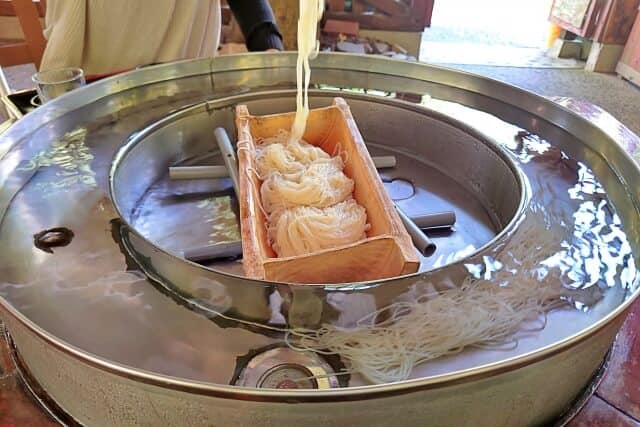
- Characteristics: Especially popular at Kibune’s kawadoko, “nagashi somen” (flowing noodles) is a quintessential summer experience. Catching thin wheat noodles as they flow down a bamboo chute is an entertaining culinary activity for all ages.
- How to Enjoy: Slurp down the cool somen noodles with various condiments (green onion, ginger, myoga ginger) while listening to the river.
- Best For: A more casual and interactive kawadoko experience. Check for availability, as it might be seasonal or require reservations.
Recommended Restaurants
Restaurant Name: Kibunesou
A ryokan (Japanese inn) and restaurant founded in the Taisho era. Their Kawadoko cuisine features creative Kaiseki (from ¥16,500) that emphasizes visual presentation, such as conger eel jelly and kudzu noodles shaped like ice pillars. A unique feature is the “Acoustic Design Room” which considers the sound effects of the waterfall.
Address: 50 Kuramakifunecho, Sakyo Ward, Kyoto City
Website: http://www.kibunesou.com
Restaurant Name: Hirobun
Located at the uppermost reaches of the Kifune River, this is a long-established traditional Japanese restaurant famous for its summer-only “Nagashi Somen” (flowing noodles). In the special seats with a close-up view of the 5m high waterfall, they offer Kyoto Kaiseki (from ¥13,000) including tempura of conger eel and salt-grilled sweetfish. In winter, you can enjoy hot pot dishes around an irori hearth .
Address: 87 Kuramakifunecho, Sakyo Ward, Kyoto City
Website: https://hirobun.co.jp
3. Hot Pot (Nabe): Surprising? Yes, but Delicious SummerKawadoko Nabe!
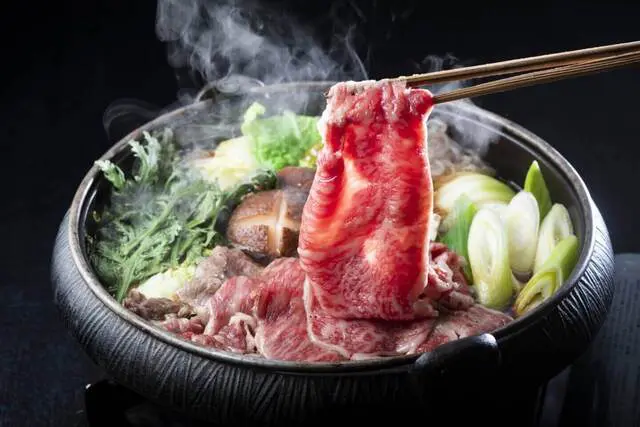
- Characteristics: Hot pot in the summer? It might seem counterintuitive, but enjoying a warm nabe in the cool kawadoko environment can be surprisingly delightful. It’s especially comforting on slightly cooler evenings.
- Example Dishes: Hamo-shabu (conger eel shabu-shabu), sukiyaki, chicken hot pot.
- Best For: Group dining or on slightly cooler days.
Recommended Restaurants (Kyoto):
Restaurant Name: Pontocho Izumoya
An eel specialty restaurant that relocated to Kyoto after being damaged in the Great Kanto Earthquake. The ¥6,600 “Noryo Kaiseki” features domestic eel grilled over binchotan charcoal, with Kyoto-produced sansho pepper sprinkled on for the final touch. From the “Unkai no Ma” room on the 3rd floor, you can see a panoramic view of Mt. Daimonji.
Address: Shijo Agaru, Pontocho Dori, Nakagyo Ward, Kyoto City
Website: http://www.izumoya.jp
Restaurant Name: Toriyasa
Founded in 1788, this is a long-established chicken specialty restaurant located in a machiya (traditional townhouse) that is a registered tangible cultural property. Their signature mizutaki (chicken hot pot) with chicken bone broth simmered for three days and bone-in Tamba jidori chicken is exquisite, and it has a history of being visited by Ryoma Sakamoto. In the summer, you can enjoy the traditional taste and coolness on the Kamo River Noryo Yuka (riverside dining platform).
Address: 136 Saitocho, Shijo Sagaru, Nishiishigaki Dori, Shimogyo Ward, Kyoto City
Website: https://www.toriyasa.com/
4. International Cuisine & Cafes: Modern Kawadoko for Casual Enjoyment
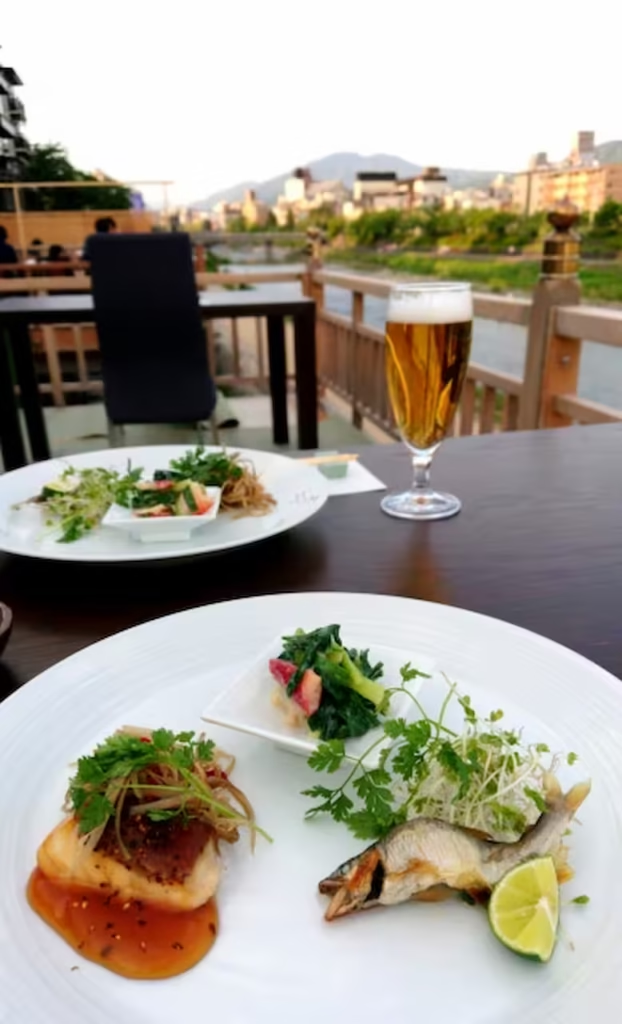
- Characteristics: Along Kyoto’s Kamo River, you’ll find not only Kyo-ryori but also establishments offering Italian, French, Chinese, and ethnic cuisines, as well as cafes and bars with noryo-yuka.
- Example Dishes: Pasta, pizza, ajillo, authentic Chinese dishes, creative cocktails, and desserts.
- Best For: Those who prefer non-traditional Japanese food, or younger diners looking for a trendy, casual kawadoko experience.
Recommended Restaurants (Kyoto, Kamo River Noryo-yuka):
Restaurant Name: Mimasuya ITALIANO
An Italian dining spot located in Pontocho. You can enjoy Kyoto-style Italian dishes using Kyoto vegetables and seasonal ingredients. There are 90 seats including terrace seats overlooking the Kamo River and couple seats, and on the Noryo Yuka, you can casually enjoy Italian lunch or dinner with chairs and tables.
Address: 140-2 Wakamatsucho, Nakagyo Ward, Kyoto City
Website: https://mimasuya-italiano.owst.jp/
Restaurant Name:Tohkasaikan Main Branch
Founded in 1924, this is one of Japan’s oldest existing Chinese restaurants located along the Kamo River. You can enjoy authentic Beijing cuisine in a Western-style building designed by Vories. In the summer, you can enjoy traditional Chinese food and the river breeze on the Noryo Yuka, making it a popular long-established restaurant for tourists.
Address: Shijo Ohashi Nishizume, Shimogyo Ward, Kyoto City
Website: https://www.tohkasaikan.com/
Tips for Enjoying Your Kawadoko Meal
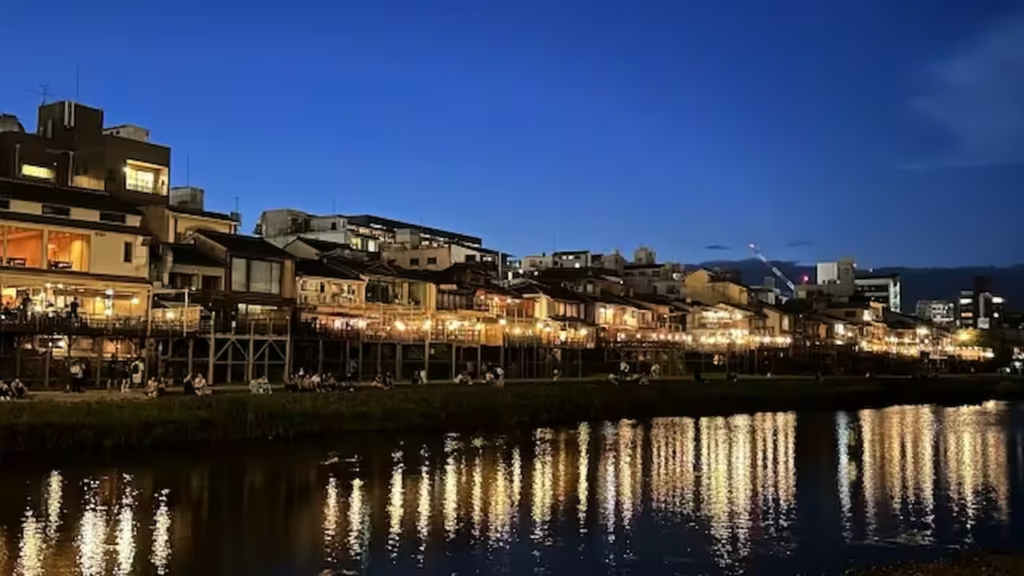
- Book in Advance: Essential, especially for popular spots and weekends.
- Check the Budget: Prices vary significantly. Review menus, course options, and prices beforehand.
- Dress Comfortably & Prepare: Casual attire is fine. Bring a light jacket for cooler evenings and insect repellent.
- Confirm Weather & Cancellation Policies: As it’s outdoor seating, operations can be affected by rain. Check cancellation policies too.
Conclusion
Dining on a kawadoko is more than just a delicious meal; it’s an unforgettable experience enriched by the unique atmosphere, the refreshing coolness, and the distinct sense of season.
From the delicate flavors of Kyo-ryori and the fun of nagashi somen to the warmth of a shared hot pot or the delightful pairing of modern cuisine with scenic views, kawadoko offers a diverse range of culinary pleasures.
This summer, why not visit a kawadoko and immerse yourself in Japan’s beautiful nature while savoring exceptional seasonal delicacies? It’s bound to be a wonderfully satisfying memory for both your heart and your stomach.
Related Japanese Food
No related articles were found yet.

 4 weeks ago
24
4 weeks ago
24


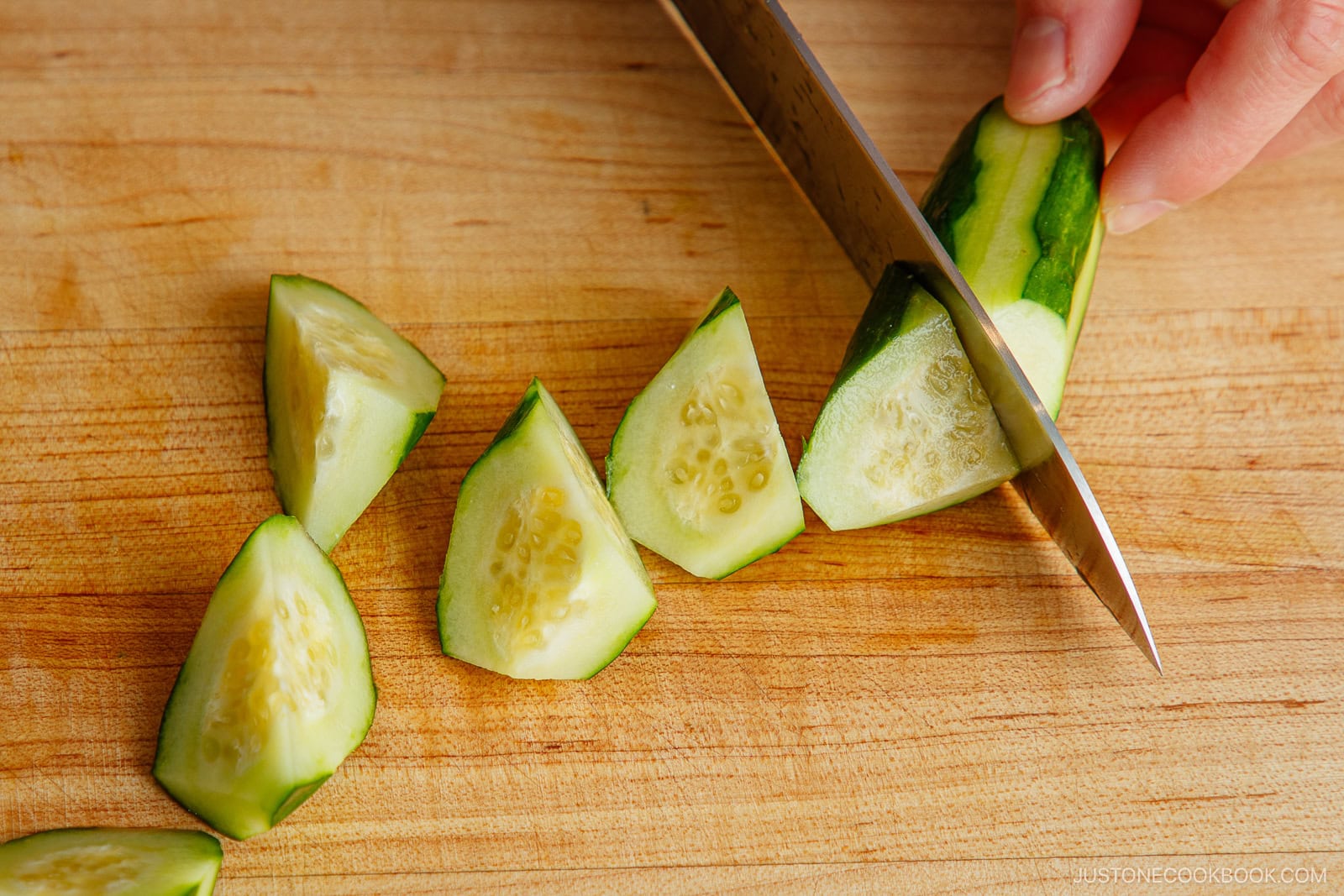

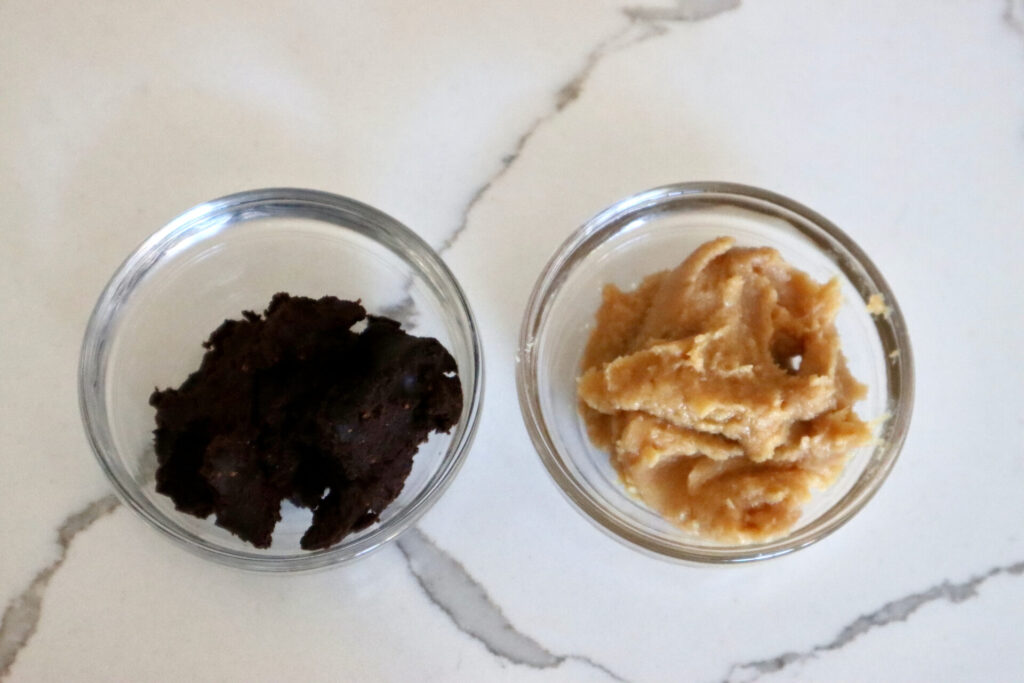

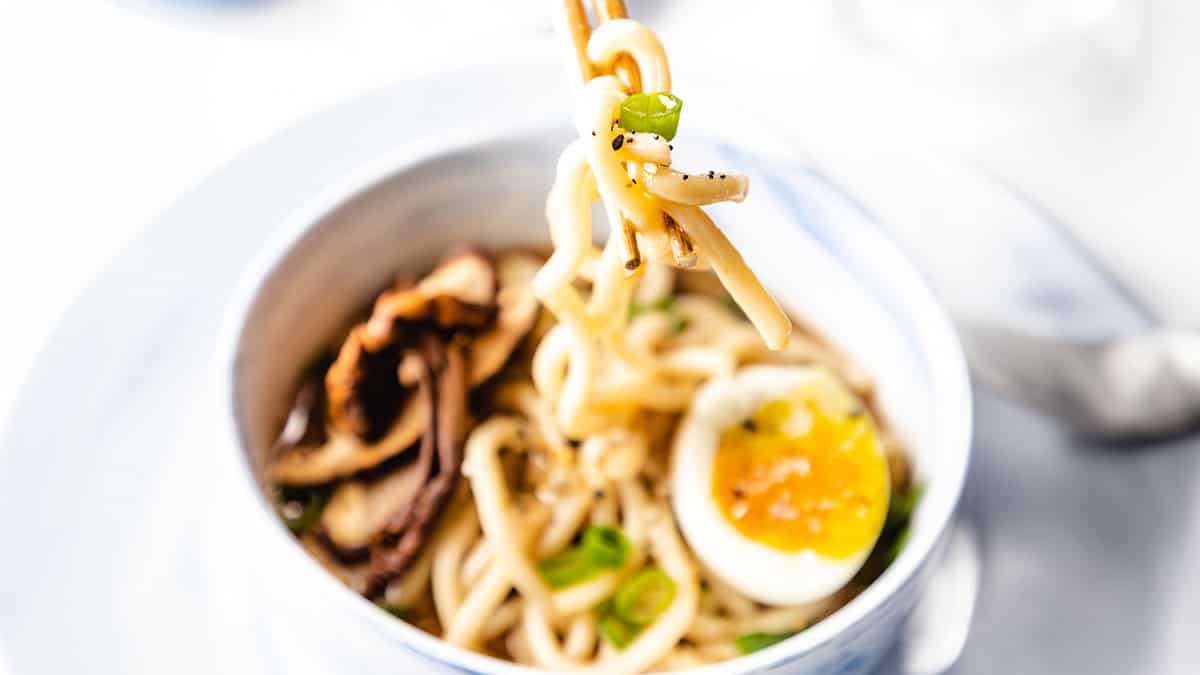
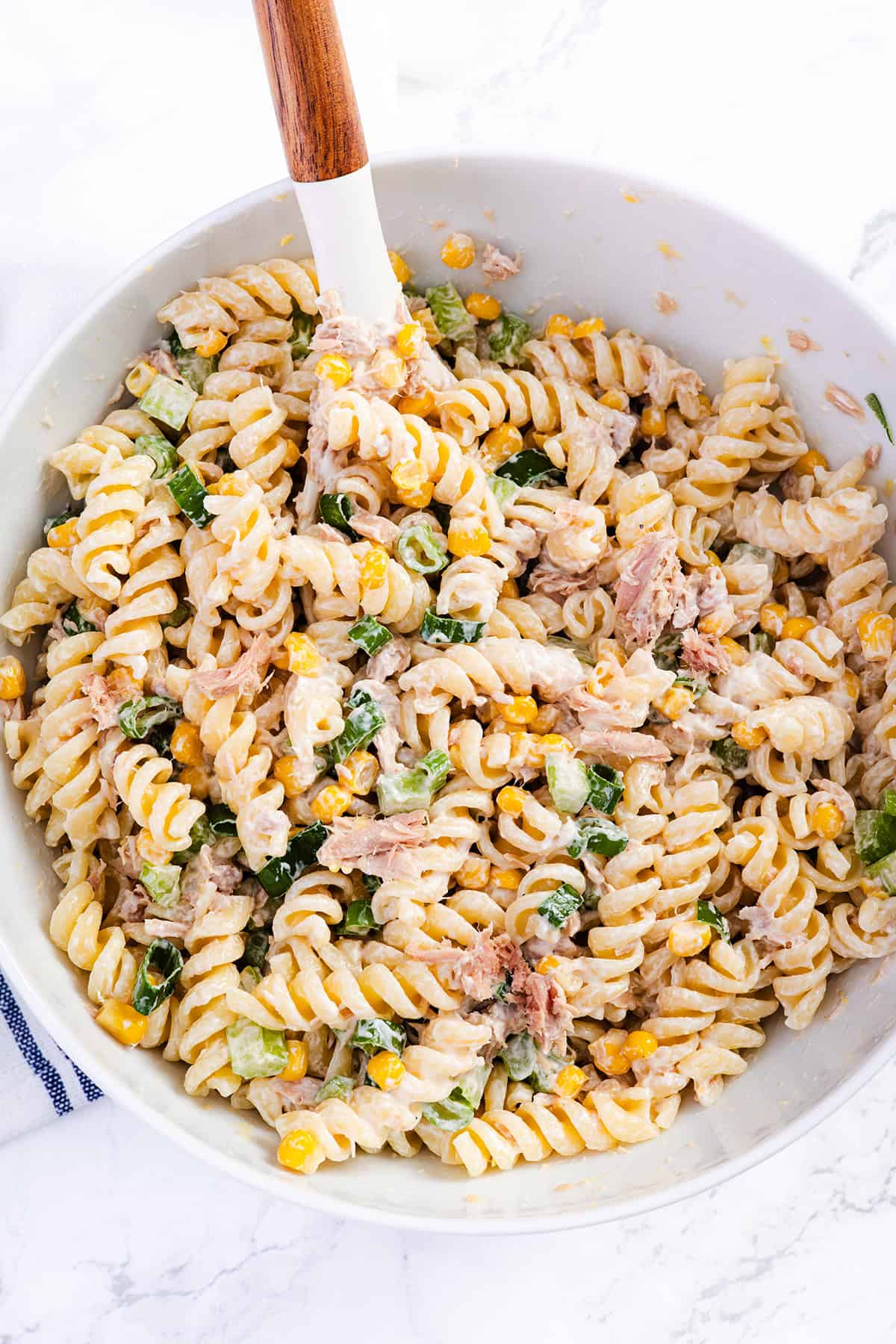

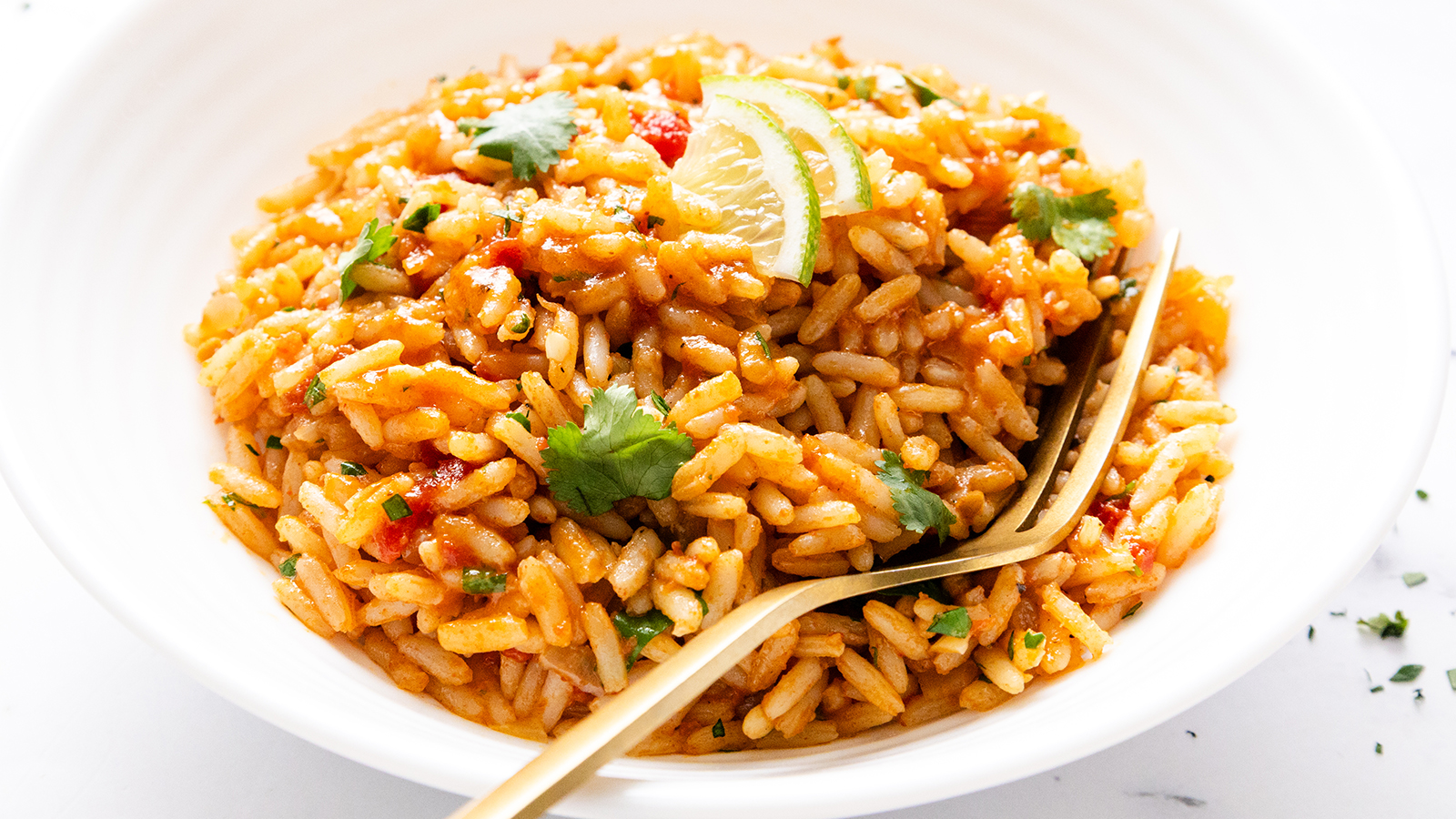
 English (US) ·
English (US) ·